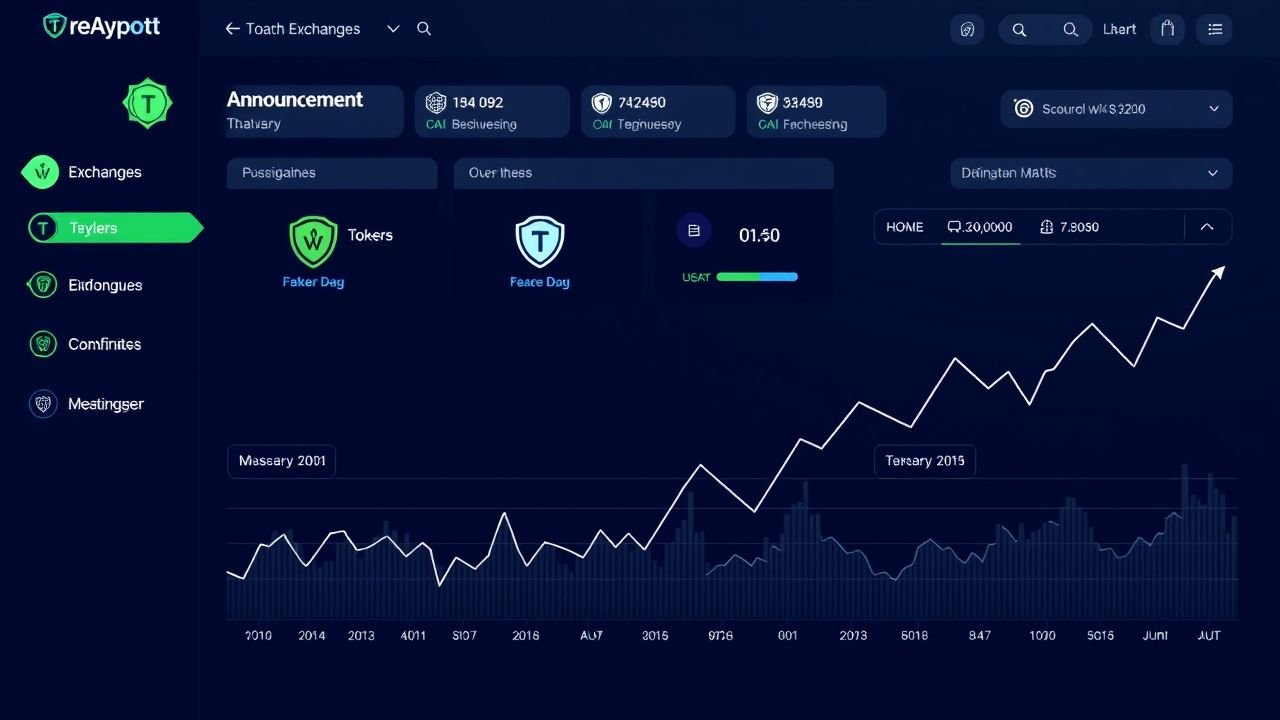The cryptocurrency landscape is evolving rapidly, and one of the most exciting trends in 2025 is the fusion of centralized exchanges (CEXs) with decentralized exchange (DEX) features. This hybrid model aims to combine the best elements of both worlds: the liquidity, speed, and user-friendliness of centralized platforms with the security, user sovereignty, and transparency of decentralized systems.
As major exchanges like Binance, Kraken, and others announce new decentralized functionalities, investors and traders must understand what this means for their trading experience, asset control, and regulatory compliance. This article explores the development of hybrid exchanges, recent announcements, the benefits and challenges involved, and the market’s reception of this significant evolution.
1. Defining CEXs, DEXs, and Hybrid Exchanges
1.1 Centralized Exchanges (CEXs)
Centralized exchanges are platforms where a trusted intermediary manages user funds and matches trades. They provide:
- High liquidity and fast execution
- User-friendly interfaces and customer support
- Broad asset listings and fiat onramps
However, CEXs require users to deposit funds into custodial wallets, which introduces counterparty risk.
1.2 Decentralized Exchanges (DEXs)
DEXs operate without intermediaries, allowing peer-to-peer trading directly from user wallets via smart contracts. Benefits include:
- Users retain full control of their private keys
- Greater resistance to censorship and regulatory pressures
- Transparency through on-chain order books and trades
On the downside, DEXs typically have lower liquidity and slower execution speeds.
1.3 Hybrid Exchanges
Hybrid exchanges blend these approaches by incorporating decentralized features into centralized platforms. Examples include:
- Non-custodial trading options where users control their private keys
- Cross-chain swaps allowing asset exchanges across different blockchains without intermediaries
- Enhanced transparency in trade settlement
Hybrid models aim to deliver liquidity and usability while reducing custodial risks.
2. Recent Announcements of DEX Features on CEXs
2.1 Binance’s Integration of Non-Custodial Wallets
Binance recently unveiled its non-custodial wallet feature within the main platform, enabling users to trade assets without surrendering private key control. This move is a direct response to growing user demand for greater sovereignty and security.
2.2 Kraken’s Cross-Chain Swaps
Kraken announced beta testing of cross-chain swap functionalities, allowing users to exchange tokens across multiple blockchains (e.g., Ethereum to Solana) without intermediate steps or centralized custody.
2.3 Other Industry Developments
Other notable announcements include:
- Coinbase exploring decentralized order matching engines
- Huobi launching a hybrid staking and trading interface
- Layer-2 integrations enhancing speed and scalability
These initiatives signal a broader industry push toward hybrid exchange models.
3. Benefits to Users
3.1 Greater Control Over Private Keys
Hybrid exchanges empower users to retain custody of their assets during trades, reducing risks of hacks and insolvency associated with centralized custody.
3.2 Reduced Counterparty Risk
By minimizing the need to deposit funds on the platform for certain trades, users face lower exposure to exchange failures or regulatory seizures.
3.3 Access to Broader Liquidity Pools
Combining centralized order books with decentralized protocols enhances liquidity, enabling users to execute larger trades with minimal slippage.
3.4 Improved Privacy and Transparency
Decentralized components provide greater transparency on trade execution and settlement, building trust through verifiable on-chain data.
4. Technical and Regulatory Challenges
4.1 Compliance with KYC/AML on Hybrid Platforms
Maintaining regulatory compliance while offering decentralized features is complex. Exchanges must balance user privacy with mandates requiring identity verification and transaction monitoring.
4.2 Ensuring Security and Scalability
Integrating decentralized components requires robust smart contract audits and infrastructure capable of handling increased transaction volumes without compromising speed.
4.3 User Experience Complexity
Educating users on managing non-custodial wallets and understanding hybrid functionalities is essential to prevent errors and maintain adoption.
5. Market Reception and Adoption
5.1 User Feedback
Early adopters praise hybrid exchanges for increased control and security but highlight the need for smoother onboarding and educational resources.
5.2 Trading Volume Trends
Initial data shows growing volumes in hybrid trading pairs, indicating user willingness to embrace new models.
5.3 Industry Implications
Hybrid exchanges may redefine the competitive landscape, forcing purely centralized platforms to innovate or risk losing market share to more secure and user-empowering solutions.
The launch of decentralized exchange features on centralized platforms marks a pivotal evolution in crypto trading. Hybrid exchanges promise to balance decentralization ideals with practical usability and regulatory realities.
For investors and traders, understanding and leveraging hybrid models offers new opportunities for secure, efficient, and flexible trading experiences. As this trend gains momentum, the future of crypto exchange is likely to be defined by hybrid innovation.






